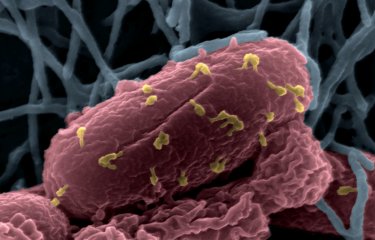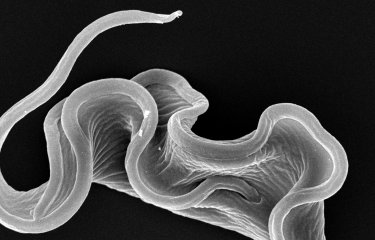Zika virus infection is still a global public health problem. The causative agent is the Zika virus, which is spread by mosquitoes of the Aedes genus. Numerous outbreaks have been reported in Asia and Africa since 2007, and more recently in Central and South America. Although the virus is well known to researchers and physicians, the incidence of neurological complications and their clinical profiles and prognoses remain a genuine mystery. In a study published in Neurology, teams of researchers at various institutions* including the Institut Pasteur revealed the long-term effects of this virus.
Zika virus infection can cause severe neurological diseases known as neuroZika. Numerous studies have attempted to identify neurological complications linked to infection by the virus. However, most of these studies were limited as they only considered hospitalized adult patients and focused on Guillain-Barré syndrome or acute neuroinflammatory symptoms. Moreover, biological evidence of Zika virus infection was reported inconsistently with no prognosis indicated.
In an effort to report the entire spectrum and prognosis of neuroZika and identify predictive factors for poor prognosis, a team of researchers from the Institut Pasteur in Paris joined forces with the Institut Pasteur de la Guadeloupe, Guadeloupe University Teaching Hospital, Martinique University Teaching Hospital, the ICM (Brain and Spinal Cord Institute), Inserm, and the CNRS to conduct a large-scale observational study based on the population affected by the 2016 epidemic in the French West Indies.
This involved collaboration between neurologists, neurobiologists, and infectious disease specialists to examine circumstances relating to Zika patients. Researchers investigated all Zika patients who presented at hospital and consulted physicians with neurological symptoms. Of these patients, 87 including 6 children had neuroZika. The majority of neuroZika cases (54 patients) exhibited disorders of the peripheral nervous system (nerves). Nineteen other subjects exhibited a disorder of the central nervous system (brain and spinal cord) and fourteen patients presented with a mixed neurological profile, which was both central and peripheral. A quarter of patients with neuroZika received mechanical ventilation in intensive care. In all these cases, traces of Zika virus nucleic acids were detected in urine, blood, or cerebrospinal fluid. A quarter of patients with neuroZika developed sequelae resulting in severe disability. These sequelae could be predicted by detecting Zika virus nucleic acids in urine, blood, or cerebrospinal fluid.
“These results reveal that the neuroZika spectrum covers a wide variety of clinical manifestations. They also highlight the importance of detecting Zika virus nucleic acids for improving management of patients who may develop severe sequelae in the long term”, emphasizes Françoise Lazarini, a researcher at the Perception and Memory Unit within the Institut Pasteur Neuroscience Department.
A link between neuroZika and long-term sequelae therefore exists and the status of the virus on patients’ admission may be used to determine prognosis. These factors must be taken into account in order to adapt the diagnosis and management of patients with neuroZika.
*CHU de la Martinique, Faculté de Médecine de l’Université des Antilles, CIC Antilles Guyane, Inserm
Institut Pasteur, Perception and Memory Unit, CNRS, Unité Mixte de Recherche
Hôpital de la Pitié-Salpêtrière AP-HP, Sorbonne Université, INSERM, Institut du Cerveau et de la Moelle épinière
Source
Long-term outcome in neuroZika: When biological diagnosis matters, Neurology, April 2019
Annie Lannuzel1, Jean-Louis Fergé2, Quentin Lobjois3, Aissatou Signate4, Benoit Rozé5, Benoit Tressières6, Yoann Madec7, Pascale Poullain8, Cécile Herrmann9, Fatiha Najioullah10, Eavan McGovern11, Anne-Charlotte Savidan12, Ruddy Valentino13, Sébastien Breurec14, Raymond Césaire15, Etienne Hirsch16, Pierre-Marie Lledo17,Guillaume Thiery18, André Cabié19, Françoise Lazarini20, and Emmanuel Flamand-Roze21
1 Centre Hospitalier Universitaire de la Guadeloupe, Service de Neurologie, Faculté de Médecine de l’Université des Antilles, Faculté de Médecine de Sorbonne Université, Institut National de la Santé et de la Recherche Médicale, U 1127, CNRS, Unité Mixte de Recherche 7225, Institut du Cerveau et de la Moelle épinière, ICM, Paris, France
2 Centre Hospitalier Universitaire de la Martinique, Service de Réanimation, France
3 Centre Hospitalier Universitaire de la Guadeloupe, Service de Neurologie, Faculté de Médecine de l’Université des Antilles, France
4 Centre Hospitalier Universitaire de la Martinique, Service de Neurologie, France
5 Centre Hospitalier Universitaire de la Martinique, Service de Maladies Infectieuses et Tropicales, France
6 Centre d’investigation Clinique Antilles Guyane, Inserm CIC 1424, France
7 Institut Pasteur, Emerging Diseases Epidemiology Unit, Paris, France
8 Centre Hospitalier Universitaire de la Guadeloupe, Service de Radiologie, France
9 Centre Hospitalier Universitaire de la Guadeloupe, Laboratoire de Microbiologie Clinique et Environnementale, France
10 Centre Hospitalier Universitaire de la Martinique, Laboratoire de Virologie, France
11 AP-HP, Hôpital de la Pitié-Salpêtrière, Département de Neurologie, Paris, France
12 Centre Hospitalier Universitaire de la Martinique, Service de Réanimation, France
13 Centre Hospitalier Universitaire de la Martinique, Service de Réanimation, France
14 Centre Hospitalier Universitaire de la Guadeloupe, Laboratoire de Microbiologie Clinique et Environnementale, Faculté de Médecine de l’Université des Antilles, Institut Pasteur de Guadeloupe, France
15 Centre Hospitalier Universitaire de la Martinique, Laboratoire de Virologie, Faculté de Médecine de l’Université des Antilles, France
16 Faculté de Médecine de Sorbonne Université, Institut National de la Santé et de la Recherche Médicale, U 1127, CNRS, Unité Mixte de Recherche (UMR) 7225, Institut du Cerveau et de la Moelle épinière, ICM, Paris, France
17 Institut Pasteur, Perception and Memory Unit, Centre National de la Recherche Scientifique, Unité Mixte de Recherche 3571, Paris, France
18 Centre Hospitalier Universitaire de la Guadeloupe, Service de Réanimation, Faculté de Médecine de l’Université des Antilles, France
19 Centre Hospitalier Universitaire de la Martinique, Service de Maladies Infectieuses et Tropicales, Faculté de Médecine de l’Université des Antilles, Centre d’investigation Clinique Antilles Guyane, Inserm CIC 1424, France
20, Institut Pasteur, Perception and Memory Unit, Centre National de la Recherche Scientifique, Unité Mixte de Recherche 3571, Paris, France
21 AP-HP, Hôpital de la Pitié-Salpêtrière, Département de Neurologie, Faculté de Médecine de Sorbonne Université, Institut National de la Santé et de la Recherche Médicale, U 1127, CNRS, Unité Mixte de Recherche 7225, Institut du Cerveau et de la Moelle épinière, ICM, Paris, France
This study is part of the priority scientific area Brain connectivity and neurodegenerative diseases of the Institut Pasteur's strategic plan for 2019-2023.








